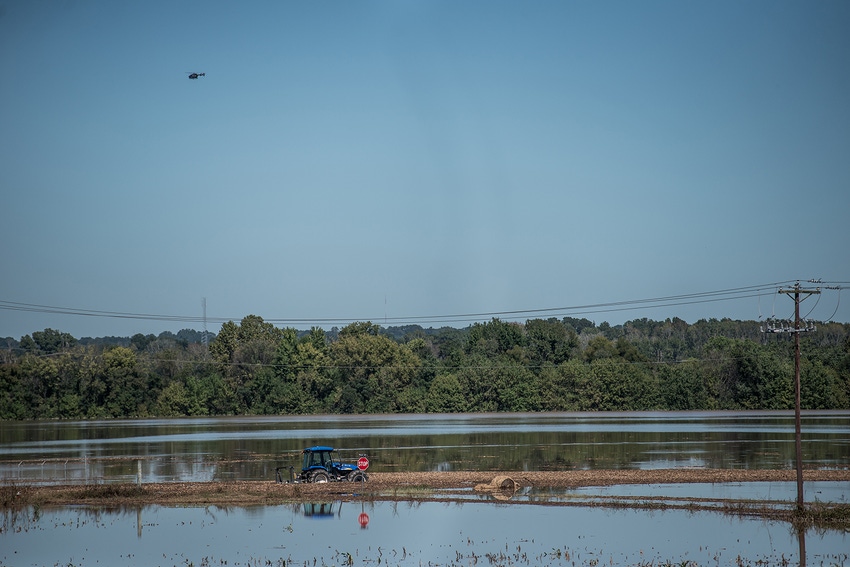The NCPC says one of the lasting stories of Hurricane Florence involves the heroic actions of farmers.
October 11, 2018

Source: North Carolina Pork Council
It's been more than three weeks since Hurricane Florence made landfall in North Carolina and dumped more than eight trillion gallons of water on the state over a four-day period. It caused an estimated $22 billion in damage and claimed more than 50 lives.
While Hurricane Florence impacted every major industry in the state, the North Carolina Pork Council says the impact on hog farms was a relatively limited component of the more than $1.1 billion in damage and losses to the agricultural community.
“Our pig farmers were well prepared for the storm and came together in its wake to provide feed and fuel to those farms in need immediately following the storm,” says the NCPC in their latest update.
Hog Lagoons: 98% Experienced Minimal Impact
According to the North Carolina Department of Environmental Quality, there were six farms with anaerobic treatment lagoons that suffered structural damage, eight farms that saw inundation of the lagoon with floodwaters and 28 farms with lagoons that experienced overflows from the rainwater during the hurricane. The structural damage impacts ranged from breach in three instances to “cracks” in the dike wall or less significant structural impacts. More than 98% of North Carolina’s 3,300 active lagoons did not experience these significant issues.
Mortality: Animal Losses Limited
Hurricane Florence resulted in the loss of approximately 5,500 swine across the state. These losses were caused by a combination of wind damage, power outage and floodwaters. Farmers in flood-prone areas limited damages by moving more than 20,000 pigs to higher ground before the storm. In North Carolina, the stock of pigs and hogs is approximately 9 million animals.
The NCPC says one of the lasting stories of Hurricane Florence involves the heroic actions of farmers. Men and women who slept in the barn with their animals to ensure their safety, who delivered feed by the bucketful when automatic feed systems were knocked off-line and who traveled by boat to check on their barns surrounded by floodwaters.
Fewer Hog Farms Located in 100-Year Floodplain
Since Hurricane Floyd in 1999, the North Carolina pork industry has worked hard to protect farms from storms like Hurricane Florence. More than 325 hog lagoons located in the 100-year floodplain have been permanently closed in the past 20 years.
The NCPC has supported a voluntary buyout of farms located in the 100-year floodplain and is pleased that Commissioner Troxler and the North Carolina Department of Agriculture have secured $5 million in state and federal funding to continue this program. It is estimated that about 60 hog farms are currently located in the 100-year floodplain.
Other Impacts
When major storms hit North Carolina, many environmental groups immediately try to bring a focus to treatment lagoons. But when floodwaters engulf entire communities, the impact is widespread, with most every aspect of cities, counties and communities affected, says the NCPC.
Following Hurricane Florence, NC DEQ Sec. Michael Regan discussed the environmental impacts that most concerned the state.
“We are really focused on our wastewater treatment facilities because there are probably orders of magnitude more human waste that has escaped these wastewater treatment facilities than what has escaped these hog lagoons,” Regan says.
According to FEMA, dams and levees were severely impacted in the storm, including at least 19 confirmed breaches in the Carolinas.
With products such as tobacco and soybeans reporting losses of $314,066,715 and $202,766,766 respectively, the NCPC says Hurricane Florence truly impacted all of North Carolina's agriculture sector.
“Our industry shares in the deep concern for the significant losses across agriculture that were a result of this storm and that threatened our our state’s ability to provide food, fiber and fuel,” says the NCPC.
You May Also Like


